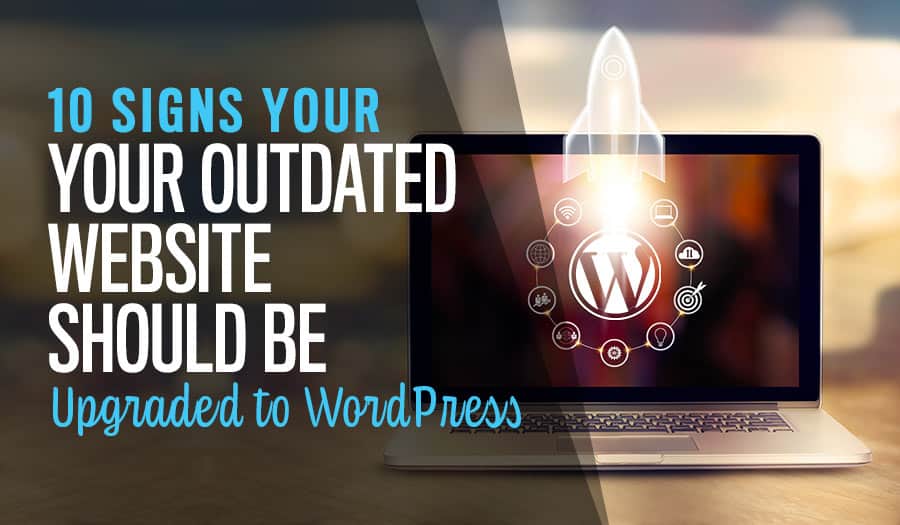Making a great WordPress website has become a race to create great content. Visual art makes your pages beautiful, and aesthetics help pull the eye to your key assets. Written work inspires the mind and creates confidence with your customers. Those who want to trust your expertise need only read your blog. There has been a huge push toward human-relatability in web design and content. However, this can all be a distraction from a core element: visibility. Let’s explore how to Improve Your Search Ranking.
If your website does not show up near the top of the first page of key searches, then customers won’t see you. Customers who don’t see can’t click, and those who can’t click won’t buy. This is why SEO is still at the top of the heap, with dozens of techniques built to increase a website’s visibility on the leading search engine algorithms.
Fortunately for WordPress developers, the path is clear and well-forged by the millions of businesses who share the website platform. The same community that creates and supports the many plugins we use is also honing the techniques for effective niche SEO. Let’s dive into the top ten methods for WordPress websites to increase their SEO page ranking.
10 Ways to Improve Your Search Ranking for Your WordPress Website
- Create a Sitemap
- Install and Use SEO Plugins
- Use Google Analytics
- Set Up Permalinks for Your Sitemap
- Format Your Content for Sharing
- Optimise Your Files
- Know How to Link In and Out
- Use “No Follow” on Useless Links
- Fill In the Metadata
- Check for Broken Links
1. Create a Sitemap
If your WordPress website is new, always start with a sitemap. You don’t need one to get started, but it’s an important asset to have. The sitemap defines the structure and navigation of your website. It shows how each page leads to other pages and how branching categories are structured. The sitemap can be used as a breadcrumb shortcut to help visitors find their way back home.
An intuitive or memorable sitemap can help users find their way to new areas by following predictably placed links. You can also place your sitemap on a footer or linked in the footer of every page.
The sitemap not only helps your visitors, it also helps search engine web crawlers. A well-built site map will allow web crawlers to catalogue your website better, understand each page, and recommend your pages confidently to search engine users.
2. Install and Use SEO Plugins
You can use many programming tricks to improve your WordPress site’s SEO ranking. Most WordPress site managers are not programmers. That’s what plugins are for! Those who understand SEO at the code level have courteously built a number of helpful plugins for other WordPress users to optimise sites for search engine compatibility.
There are link-fixing plugins, metadata plugins, image optimising plugins, page speeding plugins, and many more. The best choices change as competing plugins top each other in performance and updates. Choose a well-supported stack that suits your needs and configure for your site. Then keep up with updates, as all plugins perform better when updated regularly.
3. Use Google Analytics
Google wants your websites to perform. Your pages are the content “sold” on the search engine marketplace. That is why Google offers the Google Analytics platform to business owners to help you hone your site design and content. All WordPress site managers should be hooked into Google analytics and using their data.
Monitor visitors, activity, link follows, ad performance, and much more. Analytics will help your SEO by showing every way your website could perform better. Google Analytics is made by algorithm-makers and is designed to help you improve your revenue and page ranking.
4. Set Up Permalinks for Your Sitemap
WordPress will assign your pages a programmatic URL for each location, but the links will not be natural to your sitemap or intuitive for your users. This is why permalinks exist. For WordPress sites, Permalinks are turned off by default. So you will need to go into your settings and turn them on. Then begin configuring your permalinks so that each page has a permanent and logical URL.
This is your chance to both name your URLs and create a URL-driven sitemap that web crawlers can easily follow. Search engines like websites with logical, human-readable URLs because they are far less likely to be created by spam bots on trap sites. Make your URLs both readable and navigable by using the WordPress Permalinks setting.
5. Format Your Content for Sharing
Sharing is a big part of visibility in today’s online environment. Search engines love a site that is linked to and quoted often. Being shared in blogs and through social media shares is a big part of that. So prepare your content for share-ability. When you build your WordPress blog template, make it easy to highlight and copy. Embed images and videos in a way that copies easily for your audience.
Then integrate sharing links into each content page of your website. Make it a quick click for anyone to link your website in their social media feed. You can balloon your number of incoming links if you already have an engaged audience who casually begin sharing your web page content.
Make it easy to share blog posts, testimonials, news articles, product and service pages, and more. For example, customers’ personal wish lists might even be shared as a fun event and gift-giving feature.
6. Optimise Your Files
The size and performance of your uploaded files matter. As a WordPress developer, you know that compressed files and those designed to scale well take work to create and are worth it. The speed of your website has a big impact on your page ranking. Slow websites are shuffled to the bottom of the stack while lighting-fast websites get a chance above competitors. So the faster your website can be, the better.
File optimisation is a big part of this. Don’t be afraid to edit your images and compress them into a better file time. Resize, crop, and filter. For videos, host wherever uses the least overhead both to produce and for your users to access. Host locally for links, host remotely for performance. Host with platforms (ex: sharing on social media) when you know the platform favours local hosting.
Update your PDFs for both performance and appearance. Remember to account for mobile responsive sizing and night mode versatility. And always, always, always prioritise page loading speed.
7. Know How to Link In and Out
Linking is a big part of WordPress SEO. Inbound links, those coming from outside toward you, should be from reputable and diverse sources. Outbound links, however, are those you have the most control over. Outbound links are links from your website pointing out. You want plenty of links pointing to authoritative sites anchored into text at useful places.
At the same time, you don’t want your site associated with shady or poor-performing websites. So know how to choose good sites to link to and how to embed your links for the best performance. Include tags, and metadata, open into a new window and anchor your text in an organic fashion to help the reader. Search engine crawlers tend to favour linking practices that are organic and helpful and penalise those that seem programmatic or stuffed.
8. Use “No Follow” on Useless Links
Speaking of avoiding bad links, there’s a method to provide your sources without sullying your website’s reputation. “No Follow” tells a web crawler that your site does not “endorse” a link, merely that the link is relevant. Use this for shady websites and those with bad performance when a link is effective. Or, if you link to something useless for fun (like a meme source), use “no follow” to indicate that you don’t need the audience to follow this link.
“No follow” can also be used cleverly to manage duplicate content, internal links, and links between mutually owned or managed sites to ensure there are no penalties for “organised linking”. Knowing the correct use of “no follow” can significantly boost the power of the links already embedded in your website and any future linking work.
9. Fill In the Metadata
Metadata is a big part of search engine ranking. Search engines like data they can read, which includes data that is not immediately evident. For example, the alt-text of an image is used to select pictures for an image search result. A web page’s title text will help it be found by keyword searches. The anchor text of a link can help web crawlers create helpful link maps for users.
You are helping web crawlers direct users to your sites by filling out your metadata. Think of metadata like more stepping stones across a river. The more steps you provide, the easier it is for users to make their way to your virtual checkout.
10. Check for Broken Links to Improve Your Search Ranking
Last but not least. WordPress design is prone to broken links – links that were placed long ago but no longer work. Fortunately, there’s an easy solution. Several. in fact. Search out the leading broken link plugin for your WordPress site and run it monthly. Scan your website for broken links and repair or replace any links that no longer go somewhere useful.
By fixing broken links, you raise your website’s reputation and, thus, its page ranking. Every fixed link also updates your web pages, making them more recent and more relevant in the eyes of search engine algorithms.
Owning a WordPress website makes site management easy, but we all work hard to keep up with the competition for SEO page ranking. Search rank is a coveted position in every industry, but you can take your place by implementing the right methods and claiming your best niche keywords. For more insights on WordPress web design and marketing, contact us today!
Take your business to the next level with a Pixel Fish Website.
Check out some of our latest Website Design projects.
Further Reading:
Tips For Creating A Sitemap For Your Business Website
Read More
6 Quick Tips on How to Choose a Web Designer
9 Essential E-commerce Website features
11 of the Best Divi Wordpress Theme features you should know
How regularly should my business publish on Social Media?
10 ideas for easy blog topic generation
SEO Keyword Research
5 Steps on How to Optimise Your Website Images for Online Success
Why Your Business Needs Social Media Website Integration
Moving Your Business Domain Name Without Ruining Your SEO
5 Steps to a Small Business Marketing Strategy Anyone Can Follow



